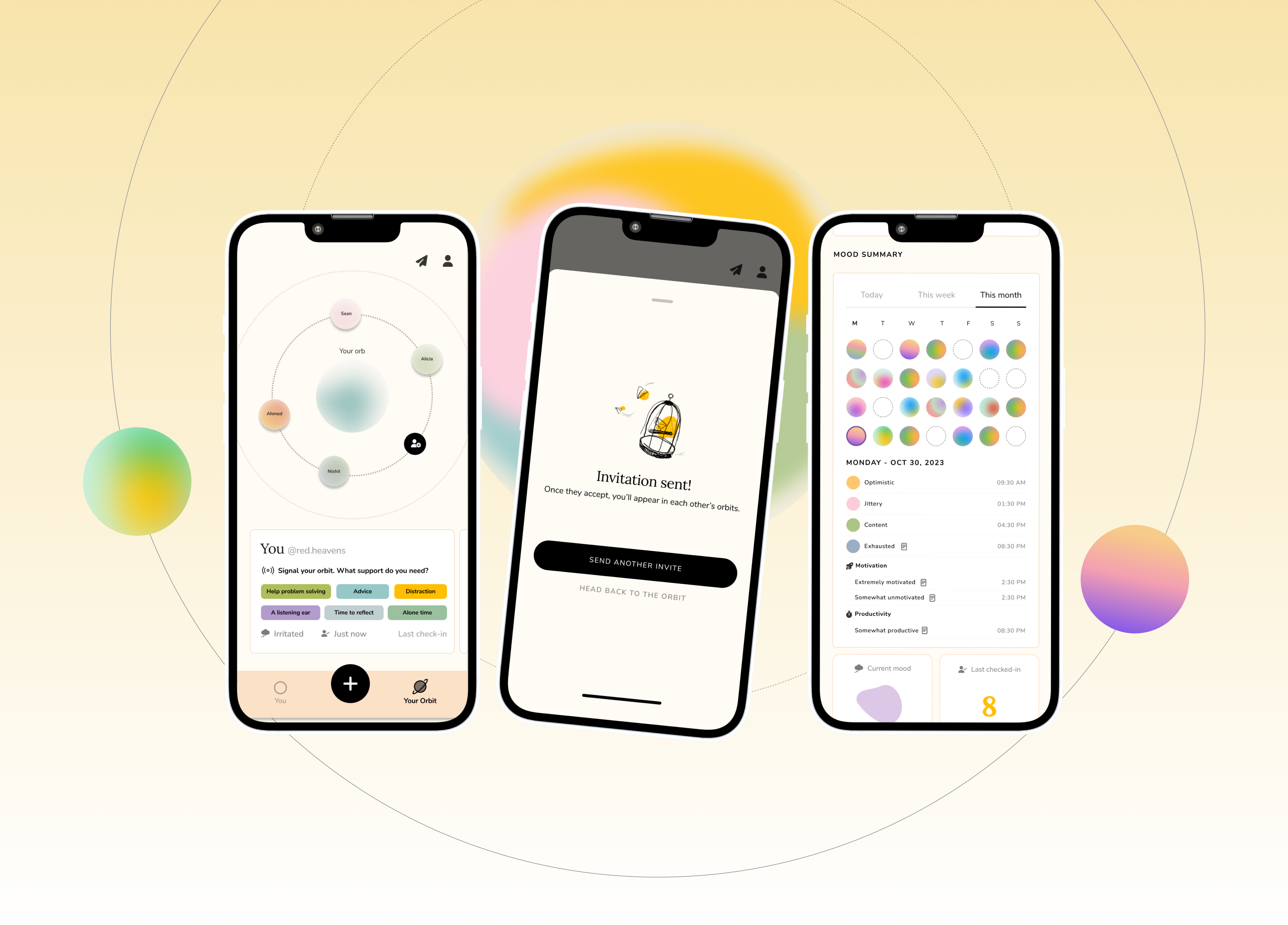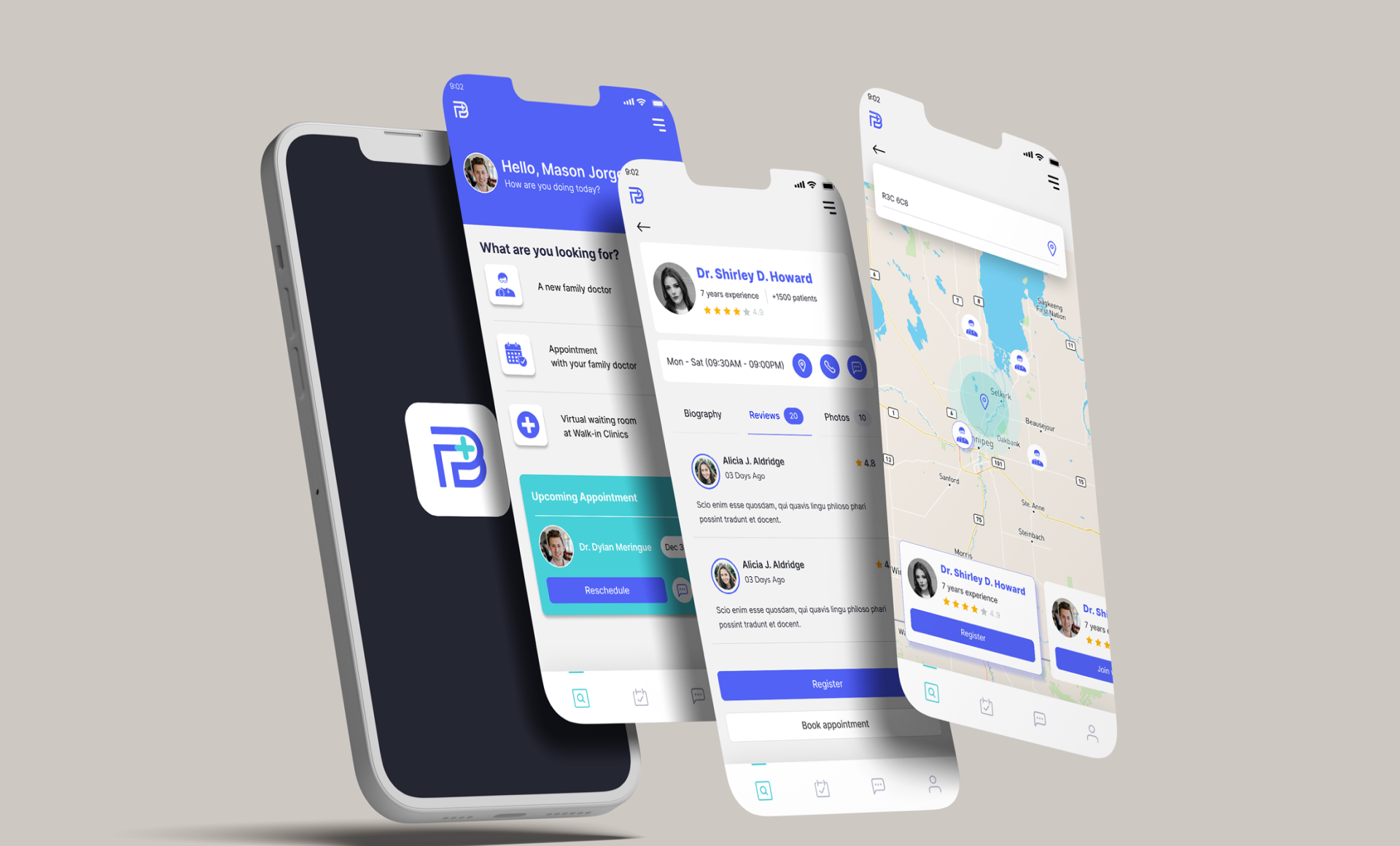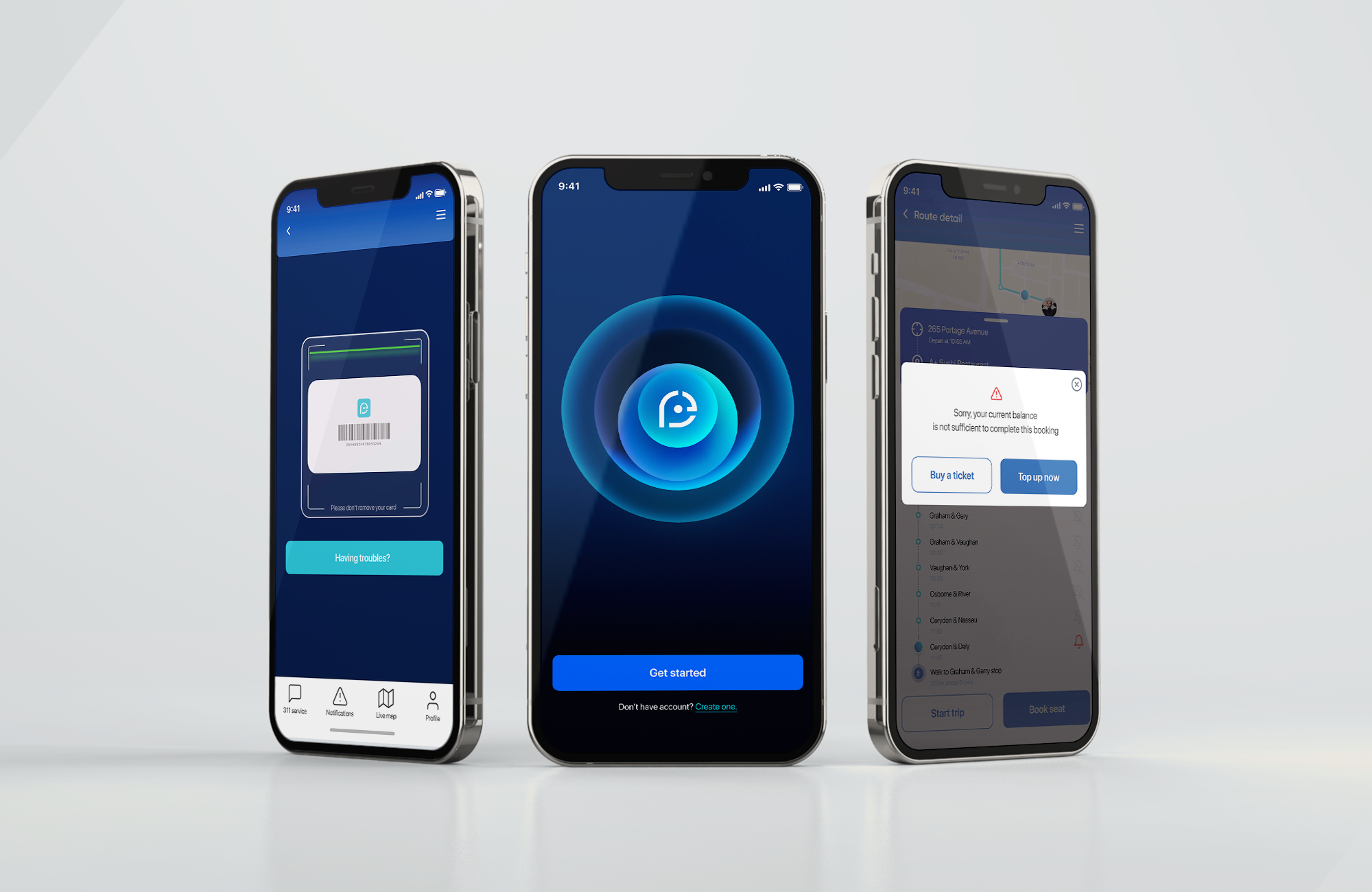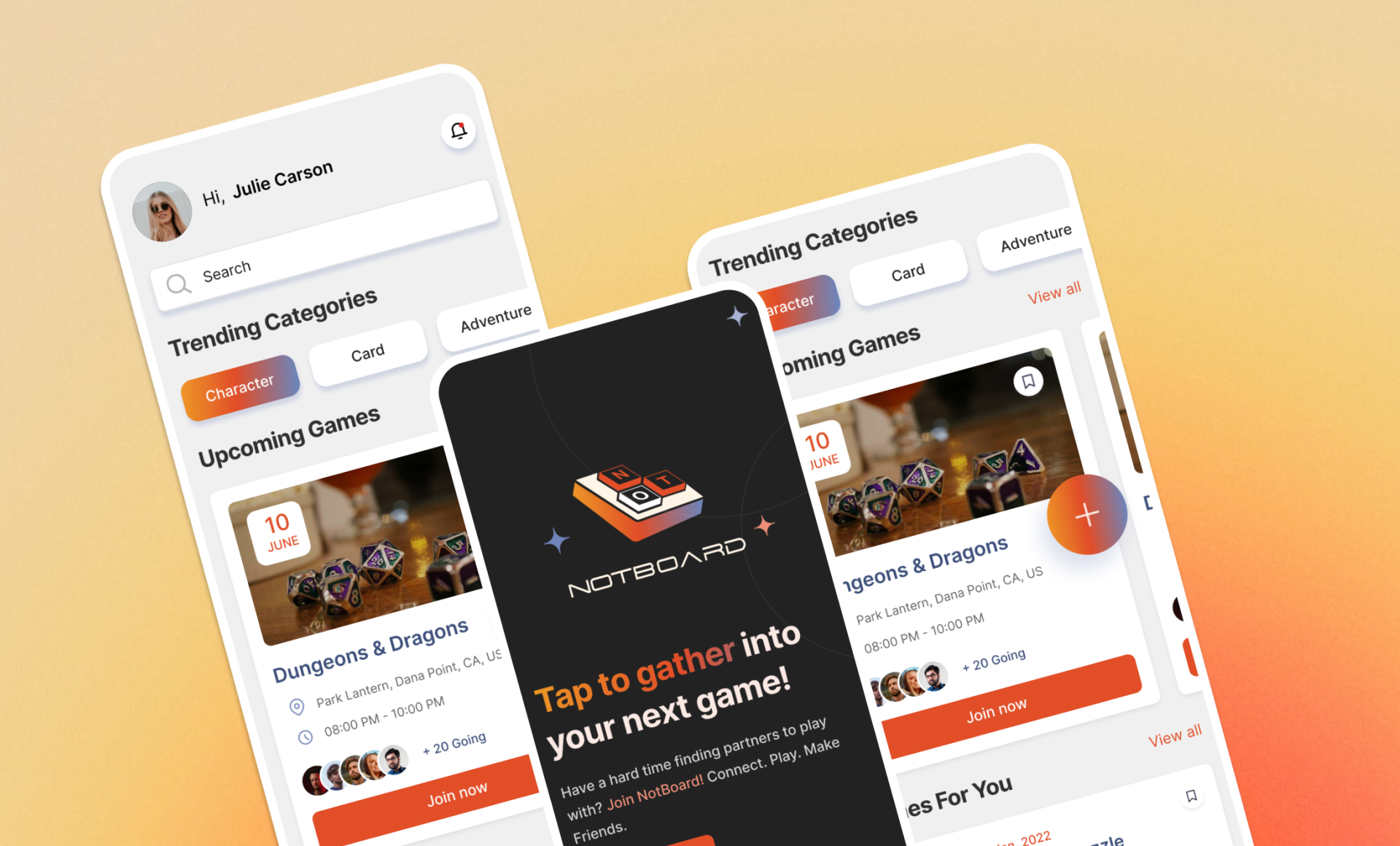The challenges
UpBeing’s initial value proposition focused on helping users understand their well-being and empowering them to make positive changes by recognizing how their behaviors and emotions impact their health. However, this approach was limited to a ‘Single Player Experience,’ preventing users from sharing their journey or engaging with a community.
As a result, there was a significant risk of user churn. Many users felt they had ‘seen it all’ or had made improvements based solely on their personal data, leading to disengagement and reduced motivation to continue using the app.
Solution preview
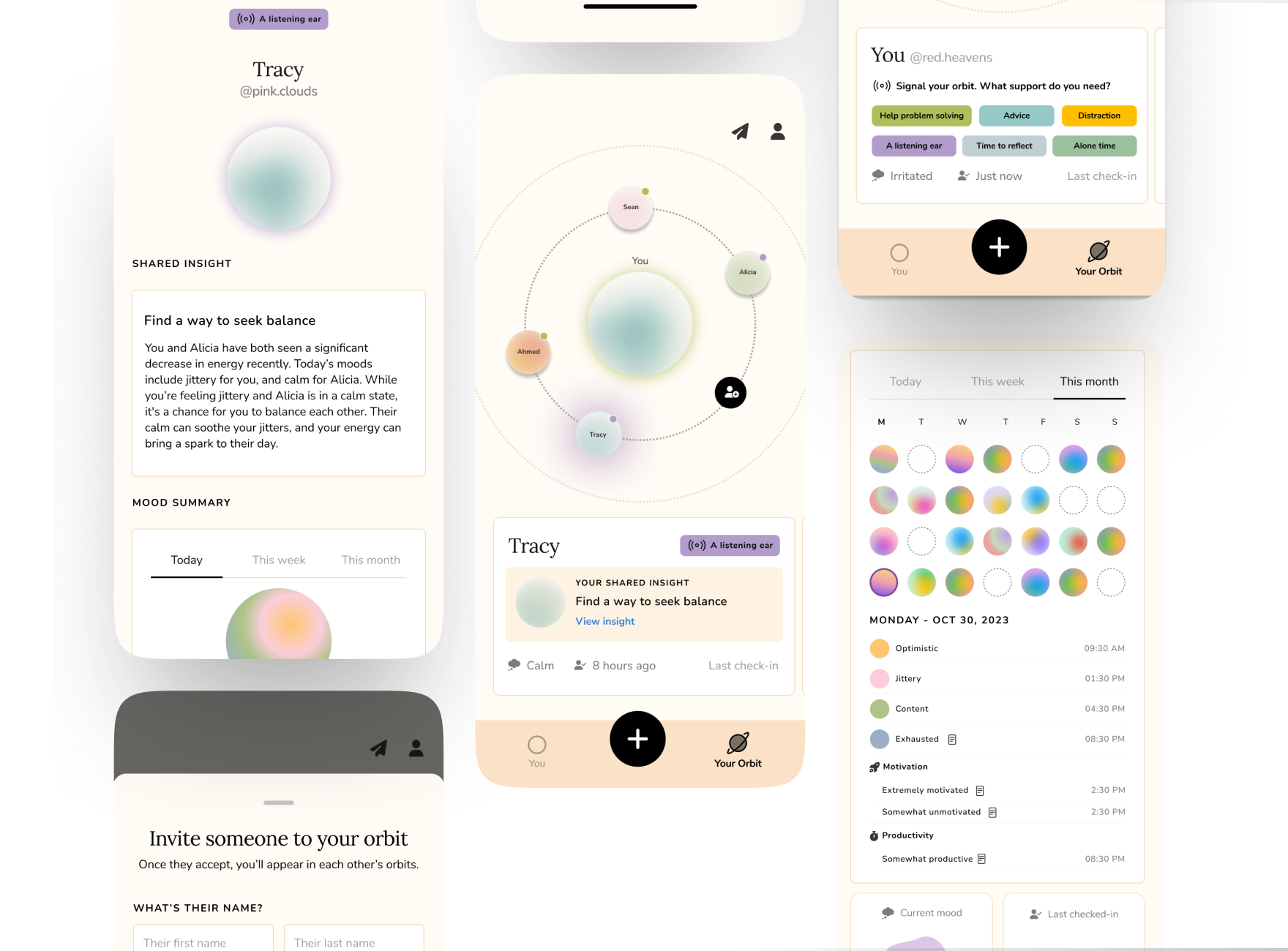
The Social feature concept
“Your Orbit” social feature, a purpose-built MVP designed to enhance interactions among UpBeing users. This feature will enable users to share their moods, fostering genuine support within their intimate circles.
Our vision is to cultivate an environment where UpBeing users can connect meaningfully, providing mutual support and understanding.
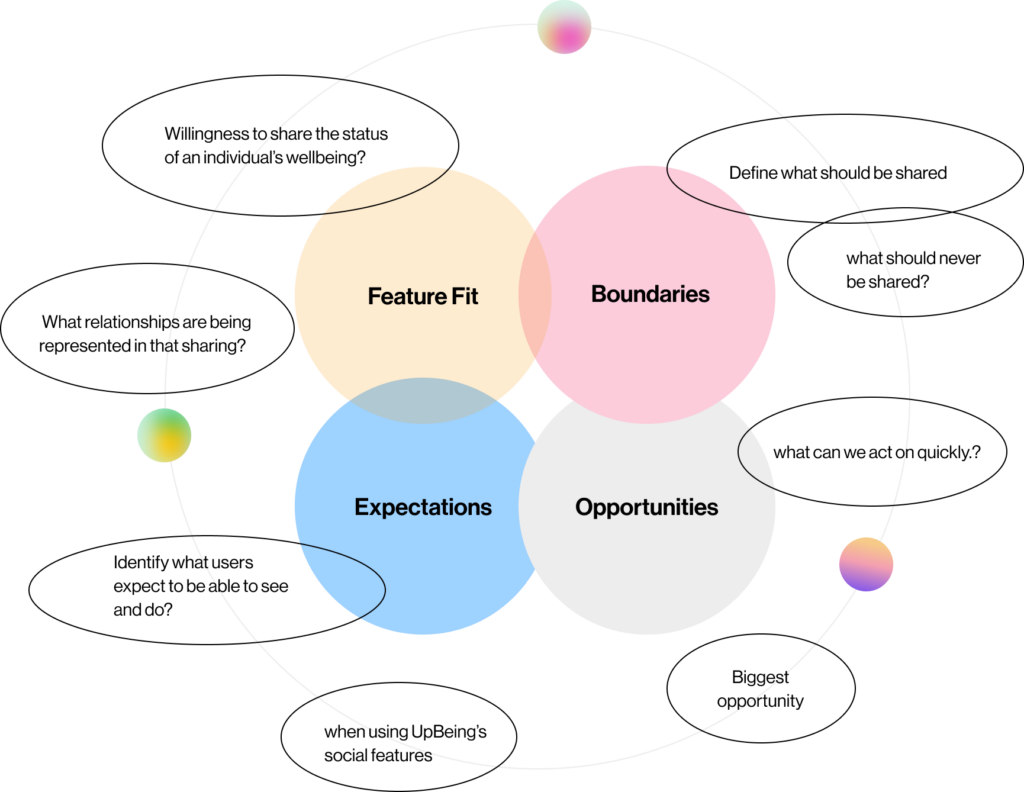
Concept testing
We know that social features give an app the potential for virality. But what do social features look like for UpBeing? How do we ensure our social features meet customer expectations? The overall objective of this research is to develop a deeper understanding of what users expect and want from social/multi-player offerings on the app.
User interview goals
We conducted a concept testing to help inform the My Circle product direction, specifically understanding how people manage their emotional wellbeing through connections.
Research findings
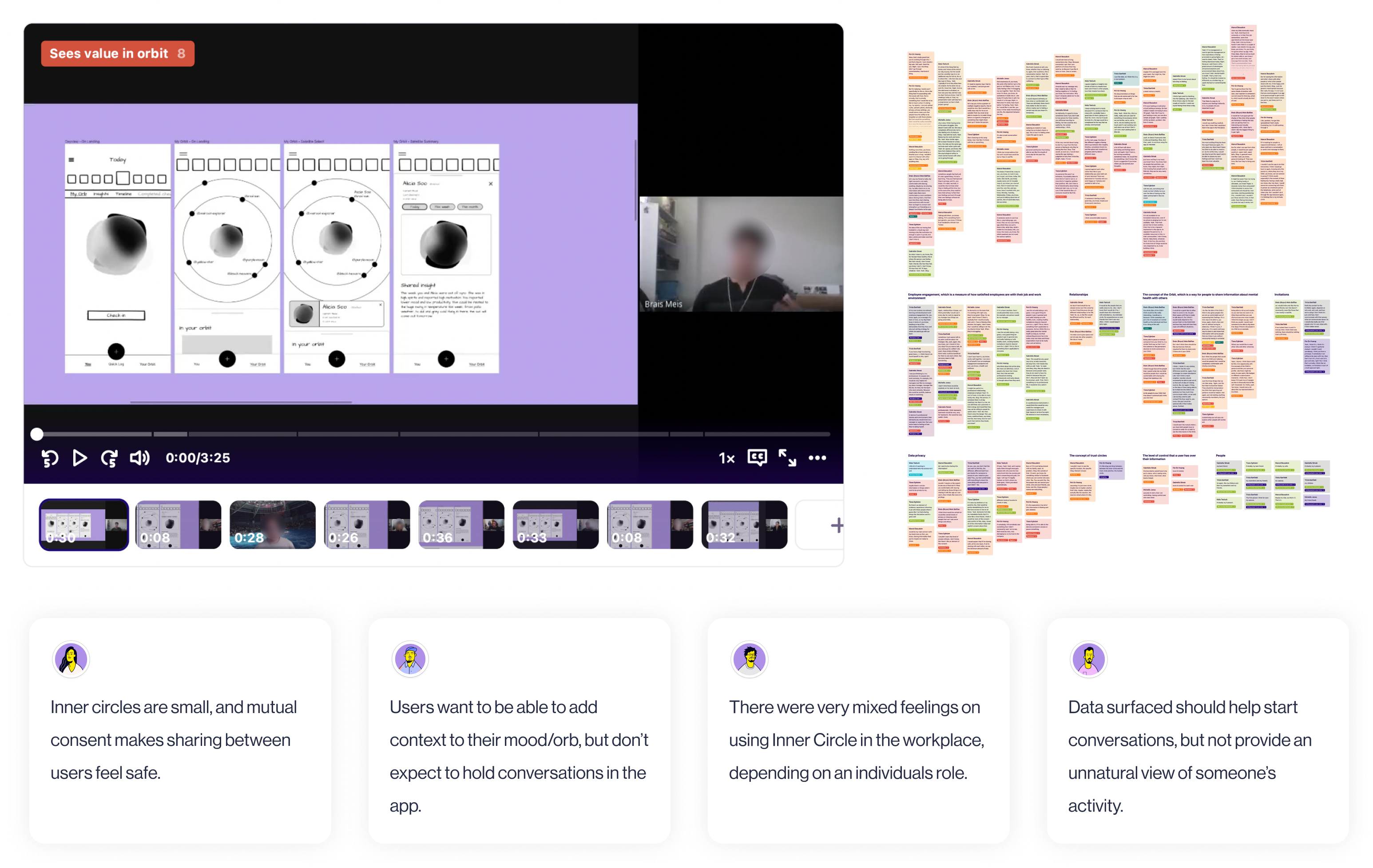
Solutions
To address the challenges identified through our research, we opted to start with an MVP that would allow us to move forward confidently with a core feature:
Feature 1: INVITE PEOPLE TO THE ORBIT
We began by introducing the ability for users to invite up to 5 individuals into their inner circle, called their “orbit.” This feature fostered a sense of connection and shared well-being within a trusted group. The permissions for sharing within this circle were equal, meaning everyone had the same level of access to each other’s mood updates and insights. Once an invitation was accepted, both individuals were automatically added to one another’s circle, creating a two-way connection that encouraged reciprocal support and engagement.
Feature 2: ADD CONTEXT AND OFFER SUPPORT
To enhance emotional expression and connection, we introduced the ability for users to add context to their mood or orb. This context could be shared in the form of text or images, allowing users to provide deeper insights into what might be influencing their emotions.
Additionally, users gained the ability to signal whether they did or did not need support, empowering them to communicate their emotional needs clearly. In response, others within their circle could offer support by reacting to the person’s mood or orb, providing a sense of connection and empathy within the group.
Feature 3: ABILITY TO SEE THE ORB ALL THE TIME (DAY/ WEEK/ MONTH)
We recognized users’ desire to observe emotional patterns over time, not just within themselves but also within their inner circle. To address this, we introduced the ability to view how a person’s orb (or emotional state) has changed over various time frames—daily, weekly, and monthly.
This feature allowed users to differentiate between temporary mood fluctuations (like one low day) and more concerning, long-term patterns (such as several weeks of low mood). This was especially valuable for users who interacted with family members, particularly teenagers, as it enabled them to monitor emotional well-being over time and provide support where needed. The ability to see how orbs changed helped users feel more connected and informed, enhancing their emotional awareness within their trusted circle.
Additionally, users gained the ability to signal whether they did or did not need support, empowering them to communicate their emotional needs clearly. In response, others within their circle could offer support by reacting to the person’s mood or orb, providing a sense of connection and empathy within the group.
FINAL DESIGN
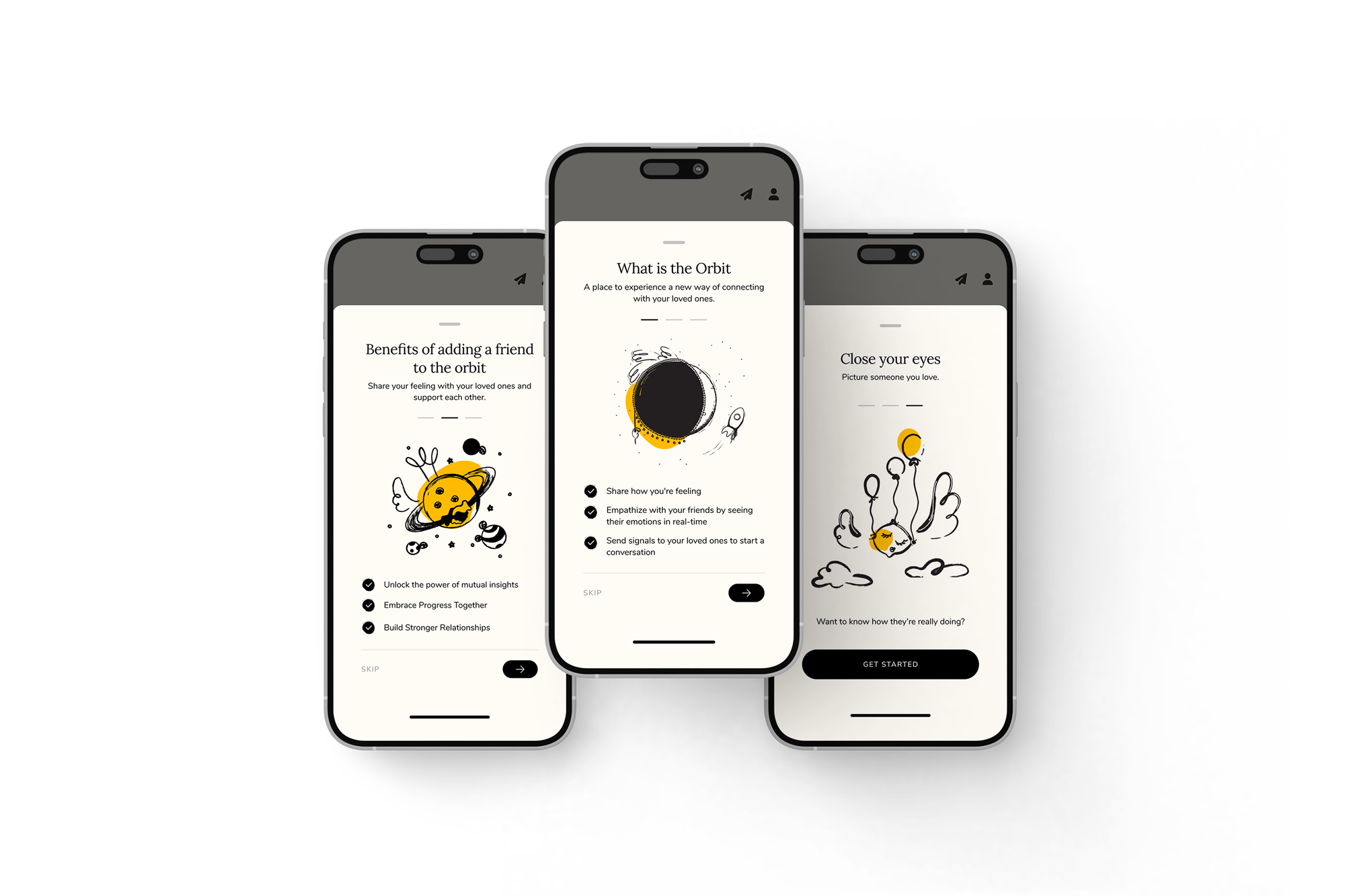
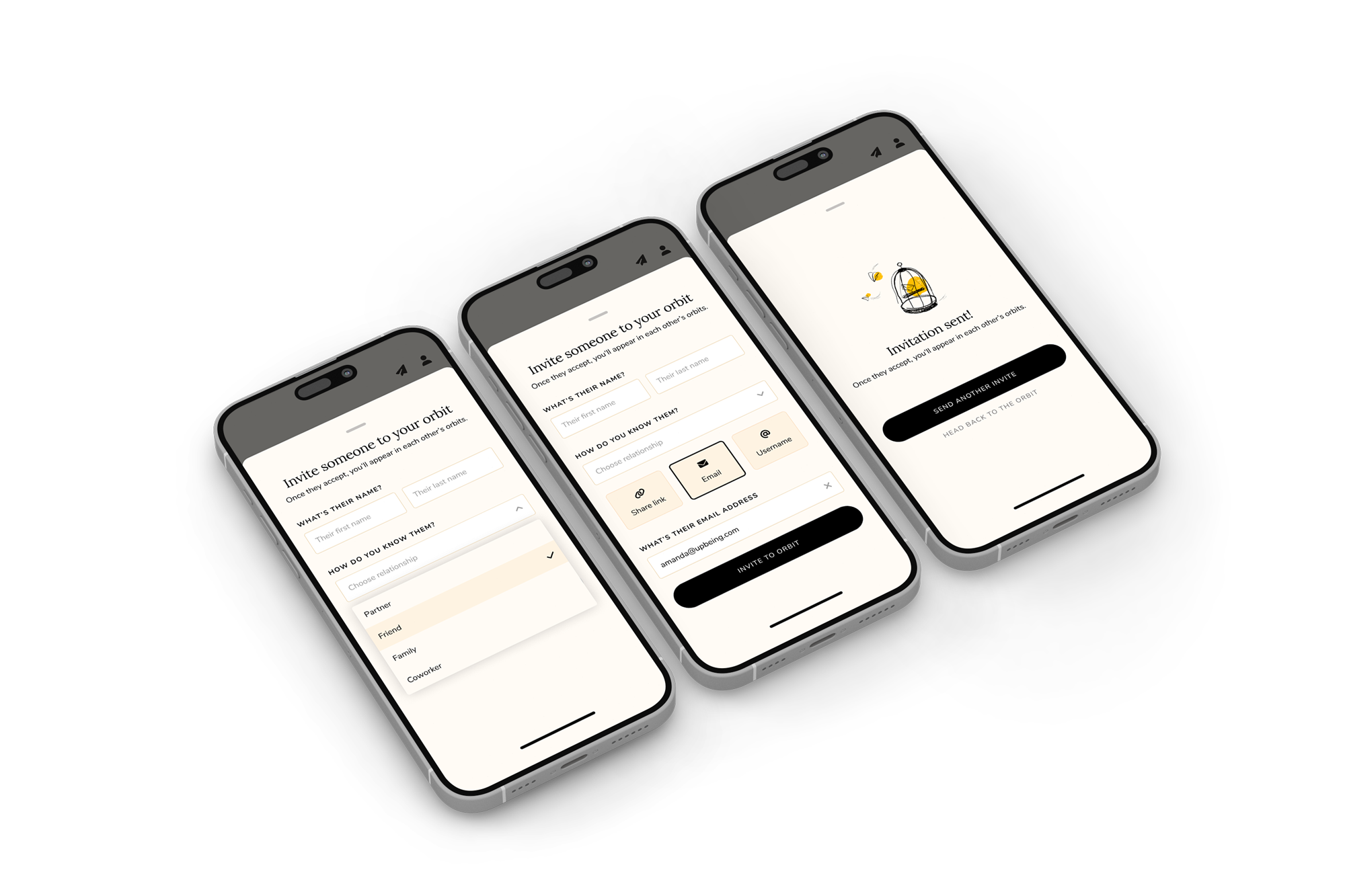

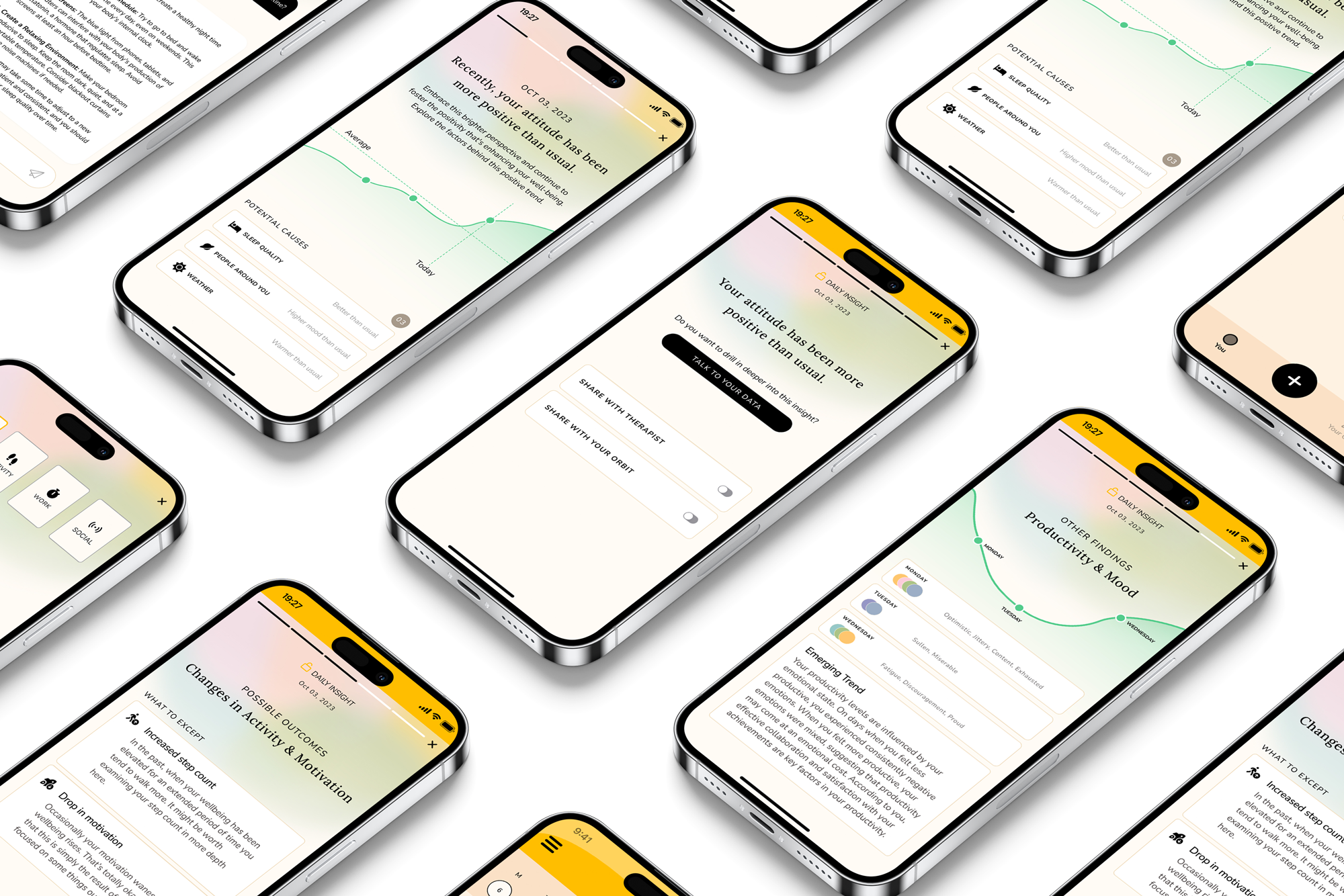
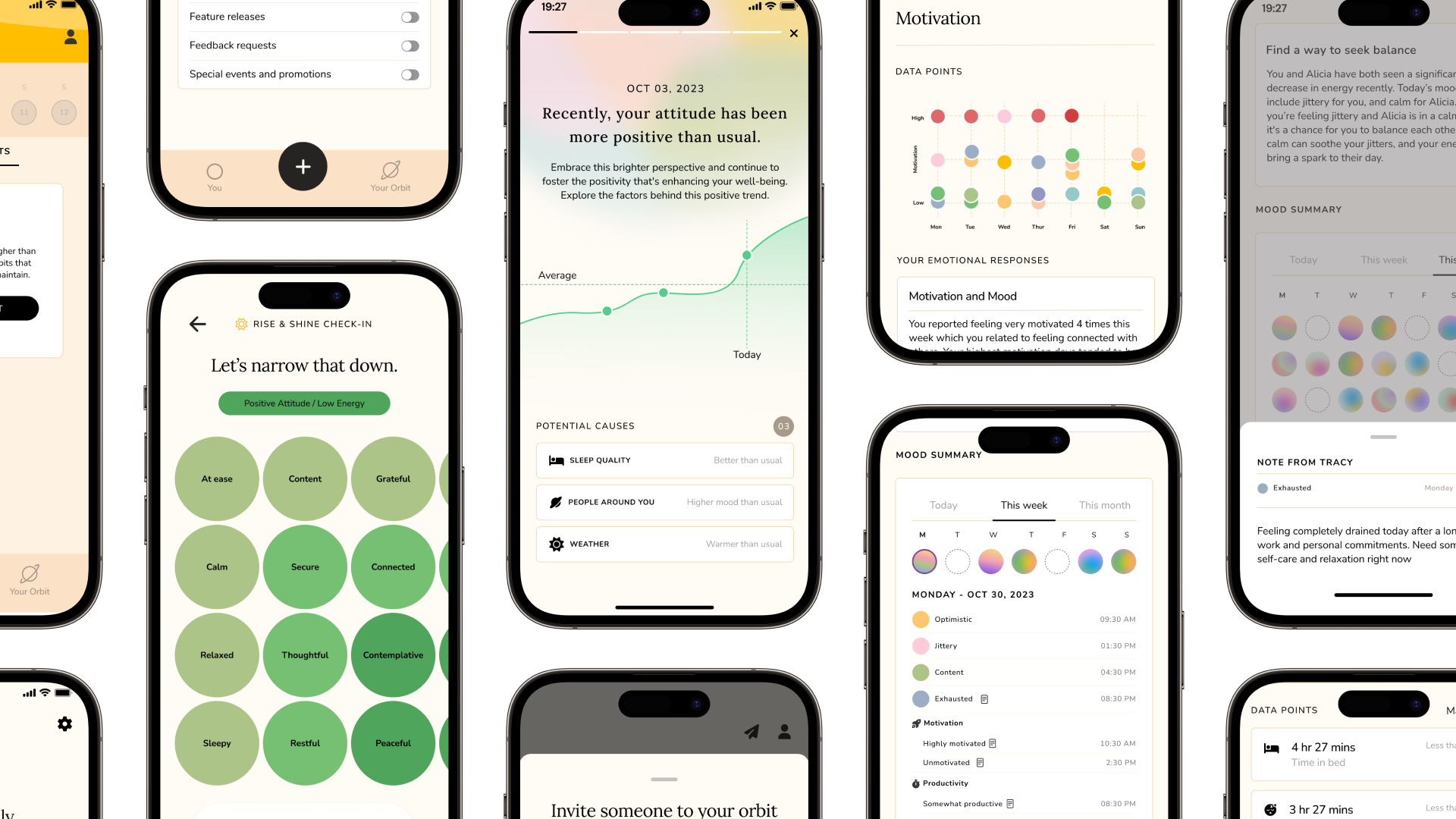
The impact
User Feedback from Pre-Launch Diary Study
To gather in-depth insights about user behavior and interactions with the app, we conducted a pre-launch diary study. This research method involved participants journaling their daily experiences with the app over a set period, offering us valuable, real-world feedback about how they engaged with the features and navigated their emotional well-being.

